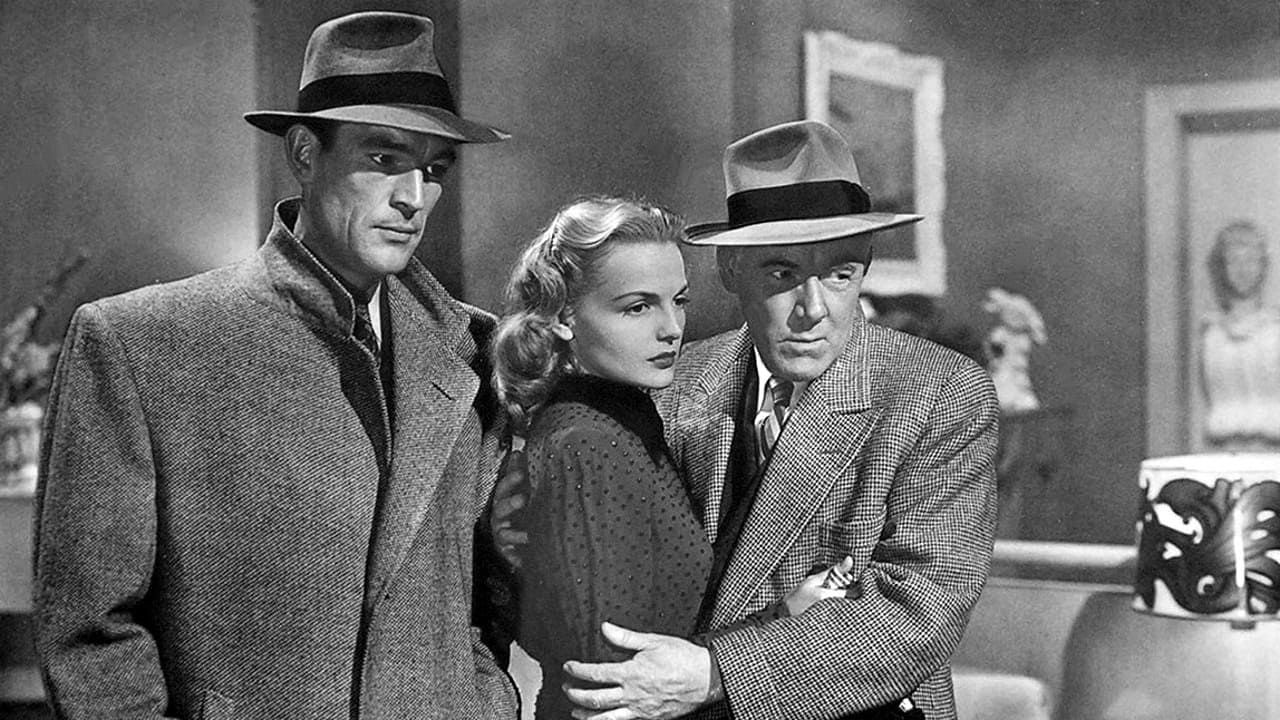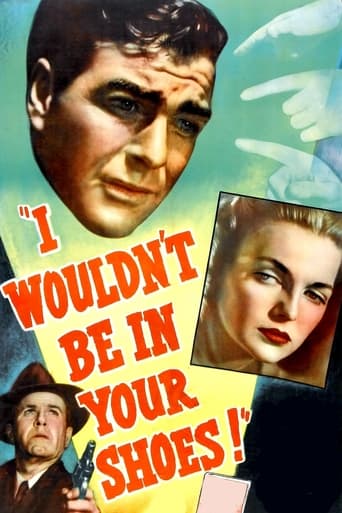

Don Castle (Tom) is an out of work dancer with only 1 pair of shoes. Not only that but he throws them out of the window when some cats bother him. He goes to retrieve them but can't find them. Next morning, his wife Elyse Knox (Ann) brings them to him from outside their apartment. Someone has returned them. How nice. Not really, though. Whoever left them there has murdered someone whilst wearing them and has kindly returned them for framing purposes. We have a flashback film with Castle on Death Row awaiting his execution. He relates his story to 4 other prisoners and the film intersperses between the prison cells, where prisoner no. 3 is in charge of the tunes, and a separate investigation to discover what actually happened courtesy of Knox. It's an entertaining film and it has a twist. You'll probably guess but these plots are all about the moment that you realize. Mental illness is definitely on the cards in this offering.
... View MoreBy the late 1940s due to the success of "I Wake Up Screaming" Woolrich's former pulp writer friend Steve Fisher was in Hollywood writing scripts for "Lady in the Lake" and "Dead Reckoning". He was given a Monogram assignment to adapt Cornell Woolrich's "I Wouldn't Be In Your Shoes". It was a huge task as Cornell's story was full of ambiguities and he had deliberately left the ending unresolved!! Woolrich worked fast, did not revise or polish and often didn't even re-read the finished piece. He also often abruptly closed the story without thinking about the fate of his characters. Fisher sought out his friend to see if they could come up with a solution that would satisfy movie goers but Cornell, whose talent was now on a downward spiral, couldn't care less about what they did to his story - he even told Steve to make up whatever ending he pleased.Don Castle and Regis Toomey who had both starred in another Woolrich adaptation - "The Guilty" were reteamed and beautiful Elyse Knox was Ann Quin. A married couple are at the end of their rope. She works in a dance hall, he is an unemployed dancer - both are hoping that California holds their pot of gold but it is only a pipe dream. When Tom (Castle) throws his one and only pair of shoes at some fighting cats his nightmare begins!! His shoes are mysteriously returned the next morning - but there is also news of a murder, an old janitor with a secret stash of old fashioned money and who lives in the same neighbourhood. Out the back Det. Judd (Toomey) finds a shoe print and the killer is almost in the bag. The shoe is unusual - it is a dancer's shoe that has been used for regular footwear (wonder whose it can be??) and to make matters worse Tom finds a wallet packed with money of (you guessed it) the old fashioned sort!! He is all for handing it over to the police but Ann..... and of course they do things her way!!When the police finally come calling Ann recognises Judd as being a regular at the dance hall - one who tips generously to those girls who prove sympathetic listeners. Adapted from Woolrich's moody novelette from a 1938 Detective Fiction Weekly, the ending was very different and in keeping with Woolrich's mysogynistic thoughts. This film is a gritty noir with lots of twists and turns.
... View MoreThis film would appear to have been 'lost' since it's release in 1948, and that's a shame as while it's certainly not the best film of the 'film noir' era; it's a good one, and a lot better than many of the more popular noirs. The film features the trademark noir gloomy atmosphere, and this is excellently complimented by the shots of the city at night. The plot focuses on the idea of bad luck, as many noirs do, and the title is a lot more literal than you may think. The plot isn't full of ideas, and mostly just focuses on the central theme; which is a bonus if you ask me as it means that the director can spend more time building up the central situation and as a result; the film is ultimately more thrilling. We focus on a pair of characters; both out of luck dancers. One night, they are being kept awake by cats outside their apartment and so, as you do, he throws his shoes out the window to shut them up. He retrieves them the next day, and soon after their luck changes when he finds a wallet containing two thousand dollars. However, the police come to believe that the money belongs to a murdered man; and the husband soon comes under suspicion for the murder.The idea that the plot focuses on is good, and the shoes of the title are the centrepiece object - which helps the film as it gives it a real sense of irony. The acting isn't the best, but all the performers do well in their respective roles. Don Castle convinces as the unlucky law abiding citizen, while Elyse Knox gets most of the plaudits for her central role as his put-upon girl. Regis Toomey, who has previously worked with the likes of Frank Capra and Alfred Hitchcock rounds off the cast nicely, and takes a lot of the focus away from Don Castle with his linchpin role. The plot plays out well, and even though the film only runs for seventy minutes; it has to be said that the film explores most of the implications of the plot, and this is always interesting since there isn't any padding. Director William Nigh does well in creating mystery and suspense, and the plot all builds to a satisfying and somewhat shocking conclusion that sees all the characters get a fitting comeuppance. Overall, this isn't a great film, noir; but it's well worth seeing and hopefully it'll be uncovered soon and given a DVD release!
... View MoreA husband and wife dancing team down on their luck finds some money that gets them into a lot of trouble - and the husband on death row for murder. His one pair of shoes condemns him. After an open-and-shut trial and conviction, the wife ends up taking on his case herself as the clock ticks toward his execution. Camera flashes between husband in cell contemplating his life and impending death while his wife and others (with varying levels of interest and investment) work toward a resolution and possible alternative outcome. Truly wonderful Film Noir murder mystery with intrigue, a twisting plot and surprise ending. Keeps you on the edge of your seat the whole way. Highest quality acting, directing and script. Sadly, there seems to be only one print of this film in the world.
... View More